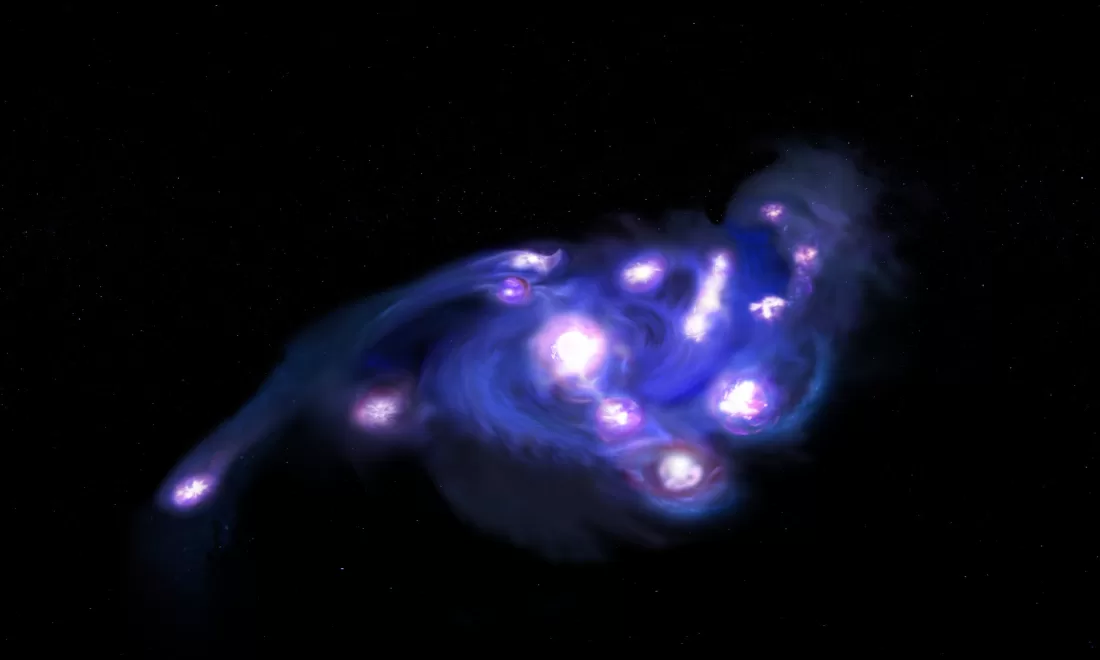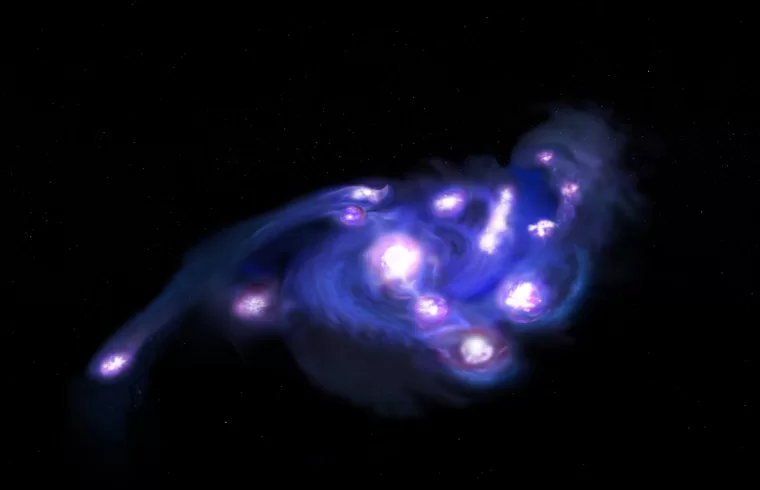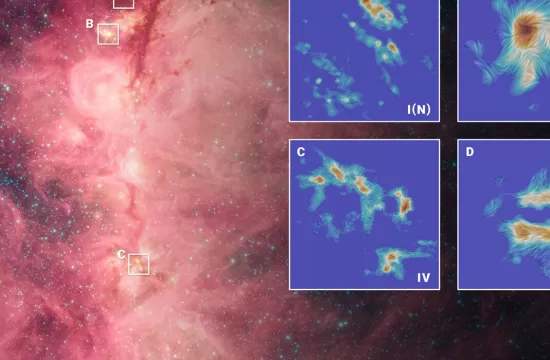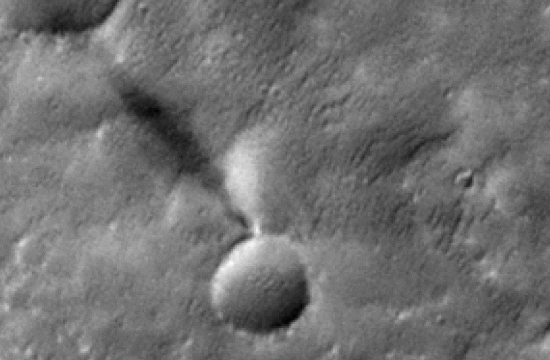
In a landmark discovery, astronomers using the Atacama Large Millimeter/submillimeter Array (ALMA) and the James Webb Space Telescope (JWST) have uncovered surprising details about a faint, newborn galaxy from the early universe.
The galaxy, located just 930 million years after the Big Bang (redshift z=6.072), exhibits a striking “grape-like” structure, composed of at least 15 dense, star-forming clumps embedded within a rotating disk.
The observations, enhanced by gravitational lensing, revealed that these clumps—ranging in size from 10 to 60 parsecs—emit nearly 70% of the galaxy’s ultraviolet light, reshaping scientists’ understanding of how galaxies formed in the universe’s infancy.
The system was previously seen as a smooth disk in Hubble Space Telescope images, but the high-resolution capabilities of ALMA and JWST exposed a dramatically different picture: a galaxy teeming with massive, tightly packed stellar nurseries.
Over 100 hours of telescope time were dedicated to studying this single galaxy, making it one of the most intensively observed systems from the cosmic dawn.
The discovery marks the first time astronomers have linked small-scale internal clumps with large-scale rotational dynamics in a typical early galaxy, achieving spatial resolutions down to 10 parsecs—about 30 light-years.
Importantly, the galaxy is not an outlier. It falls within the main sequence of galaxies in terms of star formation rate, mass, size, and chemical makeup, suggesting that many other seemingly smooth galaxies may also harbor hidden substructures.
Current simulations, however, fail to reproduce such a high number of clumps in rotating galaxies from this era, raising new questions about the physics of early galaxy formation.
The discovery challenges existing models of feedback and structure formation, indicating that young galaxies may have evolved in more chaotic and clumpy ways than previously thought.
Dubbed the “Cosmic Grapes,” this galaxy offers a rare glimpse into the complex architecture of the early universe—and may be just the beginning.
Future observations will be crucial to determine whether such clumpy structures were common during the universe’s formative years.






